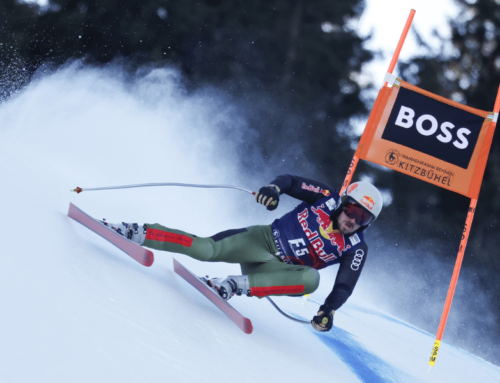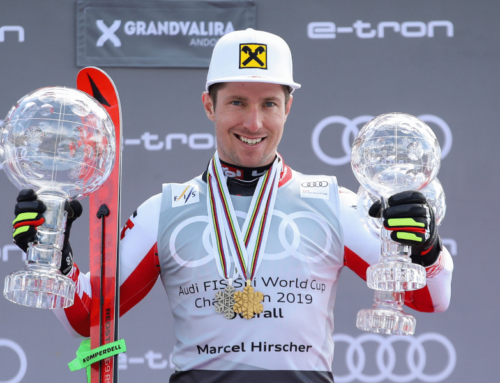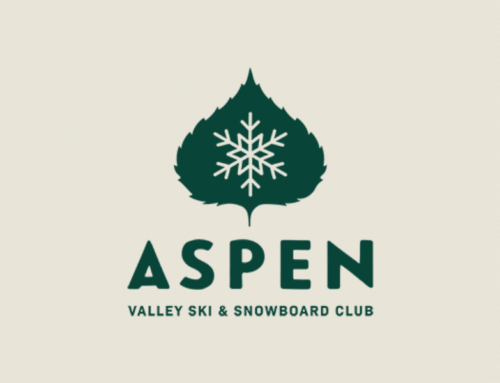Kirk Dwyer explains “coach course”
Austrian training courses: GEPA photos
Course setting is one of the most significant ways to strengthen the development of US athletes
In training, I frequently refer to the “coach course” as deliberate course sets that provide the basis to develop specific skills and tactics.
To begin with, it’s essential to understand the tendencies in course setting at the elite level. The distances between gates and the time per gate in slalom and giant slalom are revealing. If you go to the FIS website and search World Cup results, you see the time per run and the number of turns for the course under the Other Information tab. Divide the time by the number of gates and the time per turn in the slalom is approximately .85 seconds and 1.45 seconds for the giant slalom. All the World Cup and championship courses are measured for distance and documented.
However, It is essential to recognize that measuring devices, tapes and range finders are not allowed while setting men’s World Cup courses. Uniquely, men’s World Cup coaches must trust their ability to visualize how their course will run without knowing the exact distances between gates. Fortunately, this rule, initially adopted for the 21-22 season, created more variability within and between courses and has increased the challenge for the best male skiers in the world.
However, during the 2023 season it is my understand that men’s World Cup giant slalom courses averaged approximately 25 meters. For the World Junior giant slalom, the first run averaged 25 meters and the second 24 meters. Reportedly, Lara Colturi’s father set the second run of women’s giant slalom over ten seconds slower than the first. If you go to the Calendar & Results tab under Alpine and then scroll to the St. Anton WJC Women’s GS Jan 21, you can click on the video and view the difference between the two sets. A good number of Europa Cup races also have videos available. One run of the men’s Olympic giant slalom averaged 22.6 meters distance between gates. While the women’s WJC GS second run is extreme, you frequently see courses with sections of significant offset to control speed and provide a challenge.
Course parameters
Domestic setting too often offers courses with more distance and less offset. Distance between gates is one consideration, but the offset of gates is just as significant. Setting a 22-23 meter course with little offset doesn’t develop or test the skills necessary at the highest levels. At this year’s U16 National Performance Series, the giant slalom had little offset, and the course times were faster than I could recall in sixteen years of training and races on the hill from that start.
Recently, at the Eastern U16 Championships, the giant slalom courses were set with greater distance between gates (26-27 meters), producing times exceptionally low compared to the norm. This represents lowering the level of challenge, both in competition and for athlete development. Many of the most experienced coaches in the country are expressing concerns with course-setting norms that currently feature significant distance between gates and/or minimal offset. The cause may be as simple as not providing best practice information and the understandable temptation of setting in training what is the norm at races.
Distance between gates
At the elite level, the average distance in giant slalom is twenty-five meters for athletes on 30-meter skis, then courses for U16s and younger athletes on shorter radius skis should have less average distance. The difference ratio between a 30-meter ski and a 25-meter ski is .83. So if one extrapolates the 25-meter distance, it would be 20.75 meters. Consequently, for skis used by U16s with a radius ranging from 23-27 meters, the corresponding distances between gates would be 19-22.5 meters. For U14s using 21-23 meter giant slalom skis, the distance would be 17.5-21 meter course sets. Course setting consideration should incorporate a combination of distance, offset, and awareness of the tempo/time per turn.
Similarly, a ski’s potential clean arc radius is much tighter/shorter than the measured sidecut. For example, a ski with a 12-13 meter measured radius can achieve a clean 6-6.5 meter turn. Fantastic turn shapes happen from a ski on edge that receives sufficient pressure. Parallel giant slalom is a good example. They set the courses using smaller distances than a standard giant slalom, yet elite athletes carve the turns.
Beneficial offset
However, the most crucial consideration is the offset of gates. Courses with more offset enhance skill development. When developing younger skiers, the ability to arc the initiation of a turn is the goal. Great young skiers arc the turn initiation and display the “upside down” turn initiation, where the center of mass is relatively down the hill from the center of the ski. Slalom and giant slalom courses with more offset enhance the development of these essential skills.
Courses set with less distance and more offset require more commitment to a clean arc during turn initiation allowing for greater depth at the apex and increased angulation of the skis. These types of courses also encourage stronger movement and commitment to the ski. This allows a skier to complete the turn while minimizing vertical movements of the hips and upper body, allowing the center of mass to move more freely down the hill.
Eric Harlow shares his thoughts
Rather than present a single opinion, I’ve asked Eric Harlow to offer his observations. Eric is the Alpine Head Coach at Colby College and was previously the Alpine Program Director at Sugar Bowl Academy. He was also the Eastern Region Director and has held leadership positions at Burke Mountain Academy, Rowmark, and Stratton Mountain School. Additionally, Harlow is a former US Ski Team coach.
Between 2002 and 2014, I spent most of my time coaching at the Nor-Am level and toward the end of those years as Eastern Region Director, which included a role as commissioner at the U16 National Championships at Sugarloaf. During that time, the course setting at those events was expected to be challenging. We routinely saw shorter distances in SL (8-10 meters) and GS (20-26 meters) with significant offset. Generally, this was in contrast to what we saw at the regional FIS level, which was trending easier each year.
When I came to Colby College three years ago, I knew that course setting at the FISU races had always been geared toward getting everyone through the finish. College Coaches are reluctant to set courses that are too challenging because high DNF rates mess up team results. This has stayed the same.
However, in 2022-23, I found myself back at the Nor-Am level with our top athletes and I was surprised by what I saw. Although I didn’t attend all of the NAC races, those I did see at Copper and Stratton were primarily devoid of a challenge. In GS, 26-28 meters with traditional offset had become the norm, while in SL we saw the same trend at 10-12 meters.
My most outstanding mentors agreed that course setting is a critical teaching method in training. Unfortunately, course setting at races tends to drive the majority of the training course setting. As courses at races are set to decrease challenge and increase finish rate, the same will likely be true in training at every level, and that’s not good for our future.
Author’s conclusion
Some may believe faster courses with greater distance and less offset are necessary to develop speed. This has some validity, but the percentage of training in such sets should be less than those that engender the development of the technique and tactics associated with higher skill development.





















